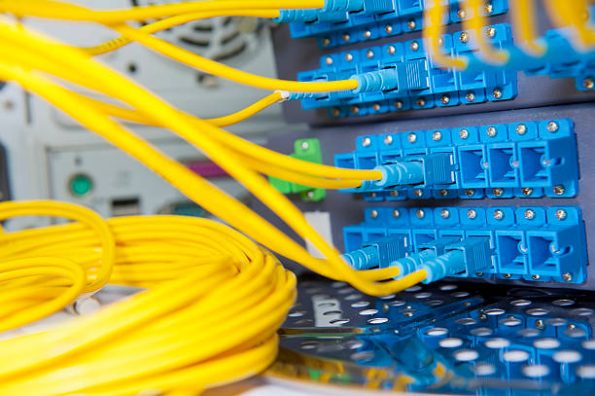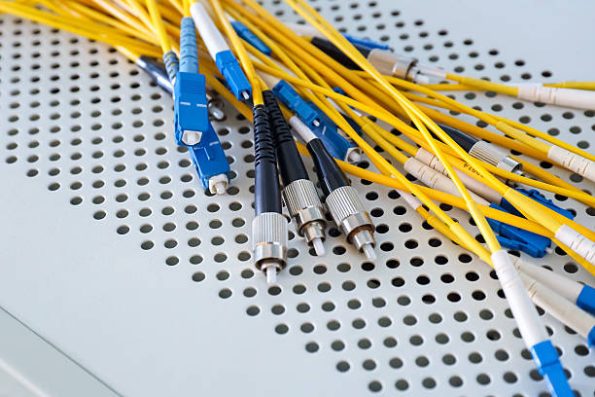In the swift current of modern communication technology, optical fiber stands as an indispensable cornerstone. But what exactly constitutes this marvel? Fiber-Life unveils the intricacies of fiber opticals, a slender conduit for light that harnesses the principle of total internal reflection to relay vast quantities of information across expansive distances.

Fiber Optics Defined
Fiber optics, synonymous with optical fiber, is a conduit for transmitting information via light pulses along glass or plastic fibers. A fiber optic cable may contain a spectrum of glass fibers, ranging from a few to several hundred, each encased in a layer of cladding—a protective glass layer that ensures light remains within the core. This is further shielded by a buffer tube and an outer jacket, the final bastion of protection for the cable’s integrity.
Advantages Over Copper Cables
The prevalence of fiber optic cables is largely attributed to their distinct advantages over copper cables. These include superior bandwidth and transmission speeds, propelling fiber optics to the forefront of long-distance and high-performance data networking. Telecommunication services, including internet, television, and telephones, have embraced fiber optics. Notable examples include Verizon Fios and Google Fiber, services that offer users unprecedented Gigabit internet speeds.

The Working Principle of Fiber Optics
Fiber optics function by transmitting data as light particles, or photons, pulsing through the cable. The core and cladding possess varying refractive indices, bending the light at a specific angle to facilitate total internal reflection—a process that channels light signals in a zig-zag pattern within the cable. Although traveling at approximately 30% slower than the speed of light due to the denser glass, these signals are nonetheless remarkably efficient.
Signal Enhancement and Transmission
To sustain signal integrity over long distances, fiber optic transmission may require repeaters at strategic intervals. These devices rejuvenate the optical signal by converting it to an electrical one, processing it, and re-emitting it as light, thereby extending the signal’s reach.
Bandwidth and Cable Types
Modern fiber optic cables are capable of supporting signals up to 10 Gbps. As bandwidth capacity escalates, so does the cost, reflecting the cable’s sophistication and performance.
Diving Deeper into Fiber Optic Cables
The inner workings of a fiber optic cable reveal two primary types: multimode and single-mode fibers. Single-mode fibers, with their smaller core diameter, are favored for longer distances due to reduced signal attenuation and the ability to maintain a singular light beam for a more direct transmission path. They boast a higher bandwidth and typically utilize laser light sources, demanding precision and often incurring higher costs.
Conversely, multimode fibers, with their larger core diameter, cater to shorter distances, allowing multiple light signals to propagate simultaneously. This results in increased data transmission, albeit with a higher risk of signal loss or interference. LEDs serve as the light source for multimode fibers.
Fiber Optics vs. Copper Cables
Traditionally, copper wire cables dominated the telecommunications landscape. However, fiber optics have emerged as a prevalent alternative, offering higher information carriage due to their expansive bandwidth and swift speeds. As glass is non-conductive, fiber optics are immune to electromagnetic interference, significantly reducing signal degradation.
Dense Wavelength-Division Multiplexing
This technology is employed to amplify the bandwidth of existing fiber networks, a testament to the continuous innovation within the fiber optic domain.
Advantages and Disadvantages
Fiber optic cables are lauded for their higher bandwidth capacities, extended light travel distances without frequent signal boosts, and resistance to interference. They are also suitable for aquatic environments, stronger, thinner, and lighter than copper cables, and require less frequent maintenance or replacement.
However, fiber optics are not without their drawbacks. They tend to be more costly than copper wire, require additional protective layers, and can be labor-intensive to install. The fragility of glass fibers necessitates careful handling to prevent breakage or signal loss due to bending.
Industries Utilizing Fiber Optics
A spectrum of industries has adopted fiber optic cables for their reliable and swift connectivity needs. From computer networking and broadcasting to internet and cable television, fiber optics provide superior connections and performance. Undersea environments and military applications benefit from their water submergibility and resistance to interference. The medical field has also embraced fiber optics for precise illumination in instruments and biomedical sensors, particularly advantageous in MRI scans, X-ray imaging, endoscopy, light therapy, and surgical microscopy.










